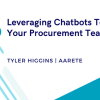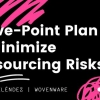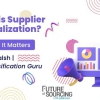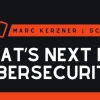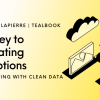An almighty fight is raging for control of the RPA software market. Who is the market leader? Which is the best product? Which features really stand out? There are a number of names in the frame, but one name Daniel Dines wants you to hear is UiPath. He is its founder and CEO and he spends his day spreading the word globally about what his software can do. We caught up with Daniel, to get his perspective on RPA and the world of smart automation.
Daniel has impeccable techie credentials. Starting out as a developer at the Microsoft mothership in Redwood, Washington, his early career was spent up to his eyeballs in SQL server automation. After a few years he returned to his native Bucharest in 2005. There he founded a start-up that developed ‘screen-scrape’ software reading information in milliseconds from the display output of another application.
The software soon won plaudits amongst the world’s largest tech firms. Companies such as IBM, Siemens and Microsoft built this screen-scraping software into their own applications. All the while Daniel’s team refined and accelerated the performance of the software, turning it into a tried, tested and battle-hardened piece of technology.
Then Daniel saw the opportunity to move with this technology into the world of business process automation, first to desktop productivity and then more specifically into what has become known as the RPA market. His screen-scraping software was the entry ticket to this new arena – providing ‘the eye of the robot’ as Daniel calls it. Around this ‘eye’ were built further pieces of the robot anatomy: routines that take inputs from the screen and other sources; a means of capturing business rules and logic; and functionality to work on client systems (e.g. entering data, formatting reports or sending updates).
UiPath’s growth has been rapid. Although a young company, it has accumulated some significant client references. To date UiPath has been providing software in particular to insurance clients such as Zurich, Swiss Re and Generali. In the last year this has started to broaden to a wider range of organisations, in sectors such as banking, automotive and manufacturing. Daniel describes UiPath as being in a period of rapid and accelerating growth. This is keeping his team very busy indeed. “In the past few years we have transformed the UiPath product into highly scalable, cloud-based enterprise software.”
This growth is diversifying geographically. “The UK is the hottest market for RPA globally, more than the US which is maybe 6 months behind. Spain, France, Italy are also building up speed.” Daniel also highlights RPA activity in Australia, a market that has not adopted offshoring as much the UK or US, which therefore provides particularly strong business RPA business cases (as less work is already delivered from a low-cost location).
To meet this demand, UiPath is working with a list of service providers and advisers who configure and deploy the software for clients. UiPath is a lean and young software company, and long term growth relies on working with many partners. “Partners are instrumental to our growth. Our client engagement primarily covers proofs of concept, and oversight of larger implementations. We look to our partners to deliver the main implementation stages, and we work closely with them to ensure success.”
Daniel recognises this rapid growth story is not completely unique; UiPath was not the first to blaze the RPA trail: “We came to the market later than our main competitor Blue Prism – but we are not late.” For Daniel, coming later to RPA provides a clear second-mover advantage: ‘We have built our core systems using very solid and up to date technology. We have made us of the latest enterprise components available such Microsoft Sharepoint Process Designer. Other RPA software architectures were designed 10 years ago. UiPath is built with the most up to date technology.”
We might expect the CEO of a tech company to extol the technical benefits of his product, but what difference might this make for a customer? For Daniel, the Microsoft Cloud, database, process-mapping and workflow components used by UiPath are a “thing of beauty”, resulting in faster implementation, faster processing speed, better security, and a general battle-tested robustness. There is also ‘Process Recorder’ feature that automates by simply watching mouse movements and keystrokes as users do their work in real-time.
What about scalability – how does the UiPath product scale? This is an important question, not just for the company, but the entire RPA industry as well. Only a few short years ago RPA technology was focused mainly on small, ‘swivel-chair’ desktop automation projects. Now customers are requiring enterprise scale deployment of autonomous robots – a very different level of ambition. Daniel points to the company’s Orchestrator automation platform and its selection by third parties such Capgemini as RPA technology partner for global solutions. One thing is certain: the ability to effectively manage a large, dispersed, robot workforce will be a major differentiator in RPA software selection for some time to come. As average RPA deployments rise from a few, to a few dozen, to hundreds of robots, Live Wires expect the profile of this particular question to rise.
However this is not the time or the place for a detailed appraisal of the pros and cons of UiPath or its competitors. Questions like these should be the stuff of formal analysis each time an automation proof of concept or implementation is launched. The key point to note for now is simply that not all RPA tools are the same: they have different backgrounds, architectures, pricing, scalability, scope, credentials, objectives, implementers and alliances. So anyone embarking on an RPA journey should not just buy the first RPA tool they hear about and assume that it is the best one for them. The RPA market may be murky, confusing and a work in progress. But already there is choice.
Daniel is a technologist with an eye on the future, preoccupied with the long term automation landscape, not just the present. “My vision is that we create a tool that will be able to take over all the basic work in an enterprise. We believe cognitive, big data and analytics will have a big impact. Life has evolved from simple to complex organisms, going through many stages. The same is true with automation. We will move from rules-based automation, to artificial intelligence. Today RPA just has eyes and hands, in the future automation will have a brain as well.”
For Daniel, success with this long-term agenda will again depend on mixing together the right high-calibre technology components: you might say that from good technology flows good automation. The smart automation of the future will need massive processing power, very high security and reliability, and new capabilities to intelligently manipulate huge amounts of data. To paraphrase Daniel, you will need good kit to do this properly.
Paul Morrison is a Partner at Aecus, the specialist outsourcing, shared service and automation consultancy. Follow him on Twitter at @MorrisonPaul1 and at www.aecus.com.



